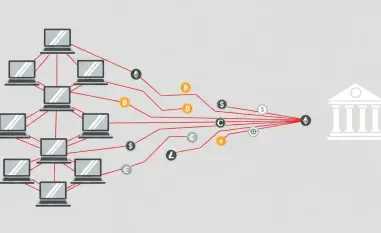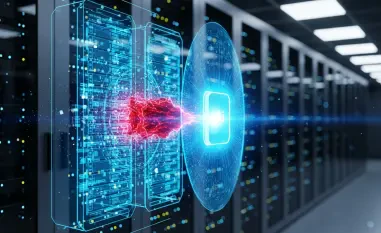The ever-evolving domain of cybersecurity is currently dominated by escalating threats such as ransomware and supply chain attacks, which are becoming increasingly complex and detrimental. As these threats gain sophistication, they impact critical sectors like healthcare and finance, underscoring the necessity for businesses, governments, and cybersecurity experts to address these challenges head-on. This article gathers opinions from industry specialists, presenting various strategies and analyses to combat these perilous cyber threats effectively.
The Evolving Cybersecurity Challenge
Numerous industry leaders agree that ransomware threats have changed remarkably over time, becoming more intricate and widespread. This evolution is largely attributed to the enhanced techniques cybercriminals employ, which allow them to breach systems and demand ransoms more efficiently. By targeting crucial infrastructure, these attackers can paralyze operations, leading to severe financial and reputational damage. Experts emphasize the immediate need to bolster defenses, as failing to do so can result in catastrophic consequences for global businesses and communities.
The consensus among professionals reveals a significant shift in the nature of supply chain attacks, attributing this to the rise of third-party service dependency. As companies increasingly rely on external vendors, vulnerabilities arise, offering fertile ground for cybercriminals. These breaches not only cause interruptions in supply chains but can also lead to data theft on a larger scale. Experts highlight the importance of scrutinizing vendor partnerships to minimize these risks, calling for more extensive risk management practices and comprehensive security evaluations.
Dissecting Ransomware Incidents
Analysis of high-profile ransomware cases underscores their substantial impact on targeted organizations. The infamous attack on Change Healthcare, where cybercriminals compromised large volumes of sensitive data, serves as a critical example. Such attacks reveal the tactics deployed by malefactors, including exploiting third-party vendor connections and encrypting essential data for ransom. Security specialists debate various prevention strategies, with some advocating for training initiatives and robust backup solutions, while others push for more rigorous infiltration detection systems.
Beyond well-known incidents, emerging ransomware variants reveal an even more challenging landscape. New tools like ResolverRAT pose distinct risks by leveraging sophisticated phishing strategies and advanced distribution methods. This evolution indicates that attackers are continually adapting, honing their methods to bypass traditional security measures. Mitigation discussions center on strengthening incident response protocols and adopting AI-driven solutions to detect these advanced threats effectively.
The Complexity of Supply Chain Vulnerabilities
Several cybersecurity analysts have focused on the intricacies of supply chain assaults, stressing the vulnerabilities born from the entangled web of third-party services. These experts believe cyber attackers exploit the weak spots within these connections, allowing them to gain unauthorized access and leverage relationships across networks. Real-world instances illustrate how attackers initially penetrate peripheral components before breaching core systems, prompting the need for a layered defense strategy that includes regular assessments of internal and external partners.
Others point out that as supply chains become more technologically advanced, striking a balance between innovation and risk management is paramount. While technological upgrades can enhance efficiency, they also introduce new security risks. Professionals advise implementing stringent security measures during every phase of supply chain management, integrating security into the core architecture, and cultivating a culture of vigilance throughout the organization.
Confronting Intelligent Cyber Threats
The rise of intelligent attacks has further complicated the cybersecurity landscape. Researchers recognize new threats such as ResolverRAT, which employs innovative attack methods targeting specific regions. These attacks often use psychological manipulation in phishing campaigns to increase the likelihood of successful infiltration. By analyzing unique geopolitical factors, attackers customize their strategies, making it vital for organizations to tailor their defenses accordingly. This necessitates specialized training and the deployment of advanced threat detection systems capable of recognizing and neutralizing these tailored threats.
Moreover, the diversity in global threat vectors calls for heightened awareness of region-specific vulnerabilities and potential future trends. Experts challenge existing perceptions, advocating for refined research and intelligence-sharing platforms to proactively address these emerging threats. Understanding global variations in threats and continuously refining predictive analysis techniques is essential for staying ahead of cyber adversaries.
Integrated Defense Strategies
Amidst these challenges, an integrated approach to cybersecurity defense is advocated. Experts propose comprehensive frameworks that incorporate collaboration among businesses, governmental bodies, and international cybersecurity organizations. These frameworks should prioritize real-time information sharing and unified strategic responses to anticipated threats. By aligning resources and intelligence, stakeholders can create a robust network capable of withstanding sophisticated cyber onslaughts.
Some professionals stress embracing proactive and cooperative defense measures over traditional reactive solutions. By fostering alliances and integrating multidisciplinary approaches, the cybersecurity ecosystem becomes more resilient. This shift requires a fundamental change in mindset, where organizations view cybersecurity collaboratively rather than as a solitary endeavor.
Strengthening Cyber Defense
Reflecting on the convergence of expert opinions, several vital defense mechanisms emerge as priorities for organizations aiming to fortify their cyber resilience. Implementing zero trust models, adopting AI technologies for threat detection, and cultivating strong cybersecurity frameworks are regarded as essential steps. Additionally, regular employee training and simulations are suggested to keep preparedness levels high, ensuring swift and effective responses to potential breaches. Applying these insights practically empowers organizations to protect their digital assets and maintain operational stability.
Envisioning the Cybersecurity Future
As the cybersecurity industry looks to the future, continuous evolution and adaptation practices remain crucial. Emerging technologies and a proactive mindset are expected to offer innovative defenses against the ever-changing threat landscape. The cybersecurity community foresees further developments in AI-enabled security solutions, international partnerships, and policy frameworks that enhance overall protection. Embracing these developments requires a concerted effort from all sectors to adapt, ensuring that the battle against cyber threats remains robust and effective.
In conclusion, the collective insights from cybersecurity experts provided diverse strategies for battling the intensifying threats of ransomware and supply chain attacks. Their evaluations on defense mechanisms underscored the importance of integrated approaches and the collective efforts needed to address these challenges effectively. As the global cyber threat landscape evolved, embracing innovative solutions and fostering international collaboration became pivotal to creating a resilient cybersecurity infrastructure.













